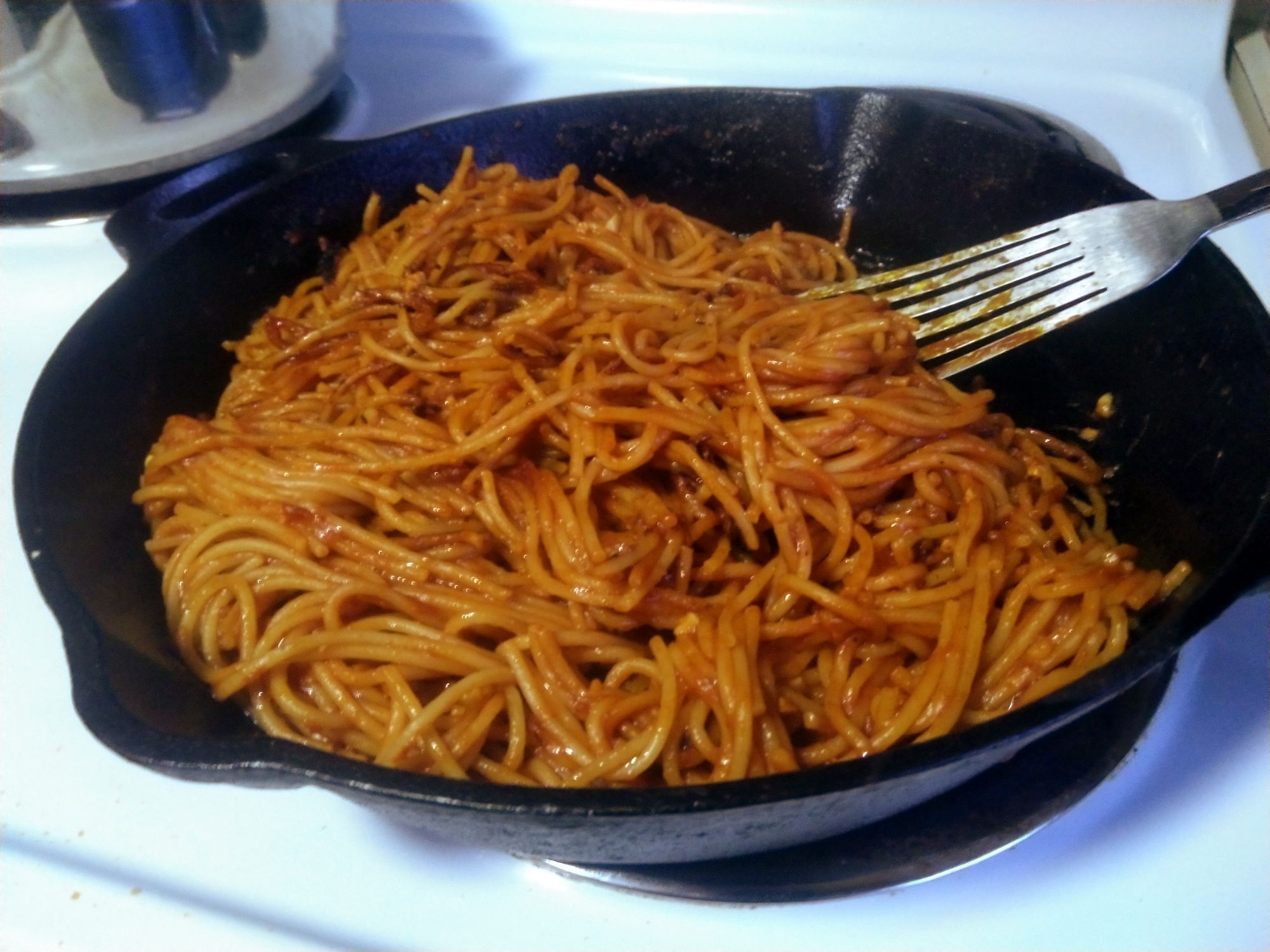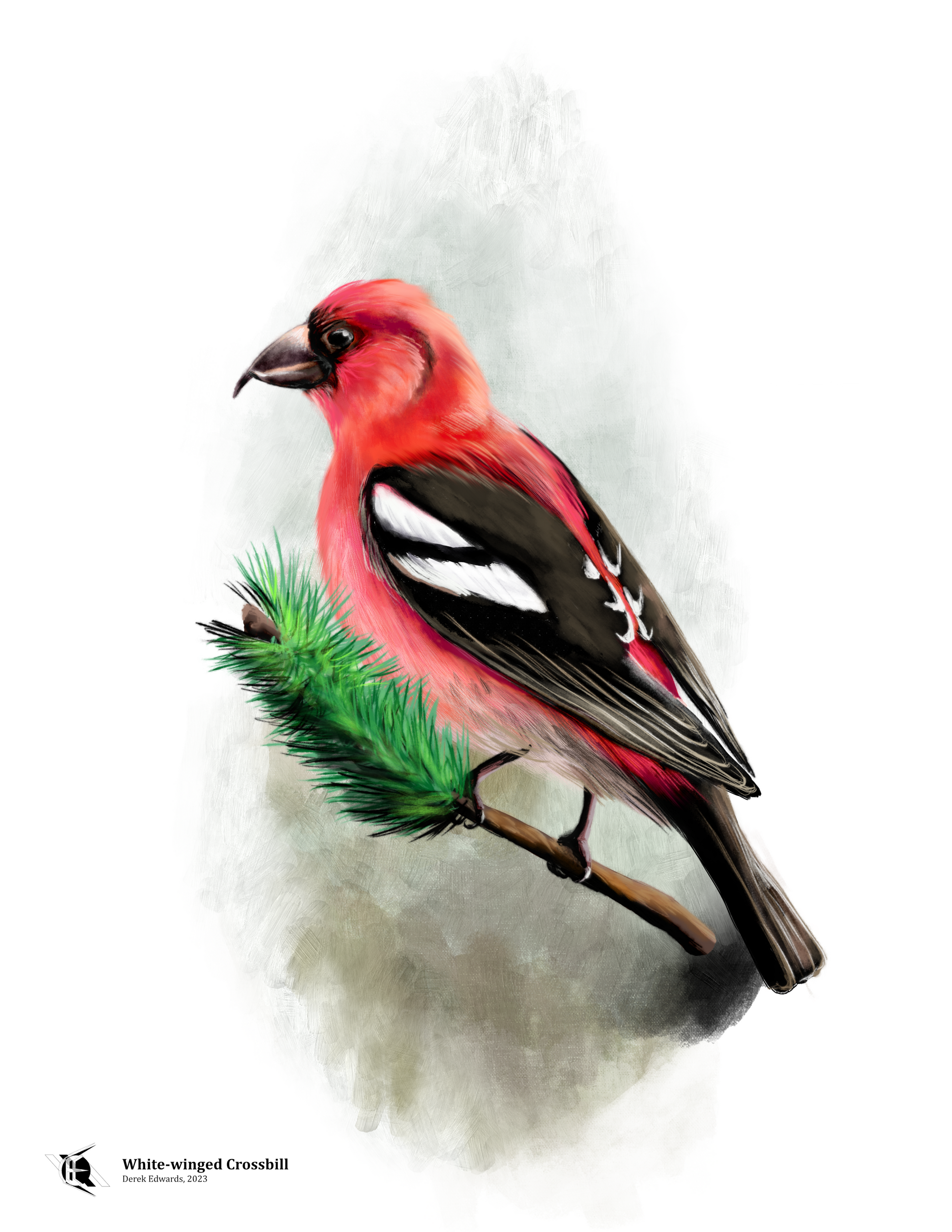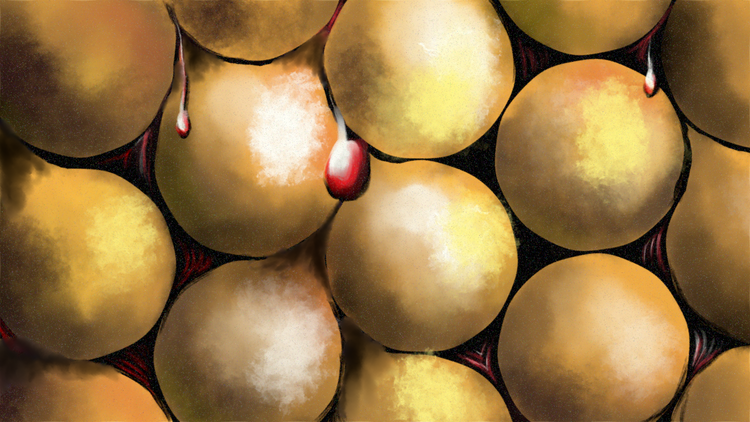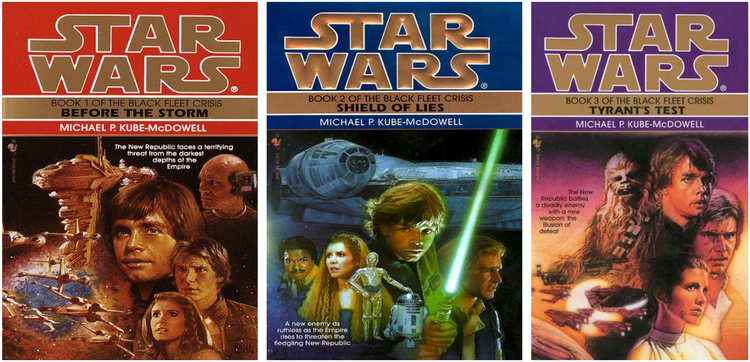
Running Commentary 1/30/2023
Hello,
I haven't been keeping you all up-to-date on Warframe lately. I need to go over Voruna and cover the latest DevStream. But I won't this week since I already have a lot to go over.
Anyway...
Watching...

BattleBots
- BLACK DRAGON v MONSOON - Monsoon is back after missing last season and despite a full rebuild it's very much the bot I remember: a decent design but not a sure-thing winner in most cases. As was mentioned in the broadcast, Black Dragon has never been knocked out. With Duck out of the picture, Black Dragon is probably the most durable bot currently in the competition. Monsoon was unlucky enough to get a bit of debris wedged in their weapon, which cost them the fight.
- MALICE v EMULSIFIER - Whatever Emulsifier is hoping to get out of using those weird treads, I'm not sure they're delivering. Last fight, they lost significant mobility, and this time they lost one side's treads while their other side was high-centered, stranding them and giving Malice the win. Malice got really lucky here, as they weren't doing too well themselves by the end there. Had battleBots not liberalized their definition of "mobile" this season, this would have been a double knockout, and I'm not convinced the judges would have awarded victory to Malice had the decision gone to them.
- OVERHAUL v STARCHILD - Brandon Zelinsky doesn't want his bot Starchild to be thought of as a Huge clone. I don't either, if only because that would be unfair to Huge. Yeah, Starchild is a weird one. It's a hammer-saw mounted on big Tegris wagon-wheels. Zelinsky compared its weapon to Sawblaze's, but the thing that makes Sawblaze's weapon so effective is that Sawblaze is a big dust-pan that can scoop up and pin its opponent, then hit them. Starchild has to swing and hit its opponents on the fly, and for most of this match, it swung and missed. What hits Overhaul did take it mostly took to its grappling arm, which went largely undamaged. Overhaul performed probably the best it ever has here.
- QUANTUM v GRUFF - Quantum once again proved able to bite through anything. I'm only disappointed that we didn't get an Uppercut-style fuel tank explosion. Quantum's team expressed hopes to take the Giant Nut this year; I'm not sure how that will go. Eventually they'll need to fight a real heavy hitter. Indeed, their next fight is against Black Dragon. If they can survive that, they might have a real shot.
- BETA v KRAKEN - Another of several British bots returning after a few years, Beta had a good first outing for the season. As usual, it drove as if it was worried it would damage its hammer, but then it did damage its hammer and that seemed to be a bit freeing for it. This fight really came down to that one hit. As for the new Kraken: it seems that Matt Spurk still needs to get used to driving a robot with a spinner. I remember Matt Maxham having similar trouble taking over Cobalt last season, but after his first fight he seemed to figure it out pretty well. Hopefully Spurk follows the same path.
- SHREDDIT BRO v HORIZON - There are just no good rookies this year, huh? There were quite a few good new bots last season, and there just aren't any this season so far. Case in point, this fight. Shreddit Bro comes from Evan Arias, the same guy who did Pain Train, a really underwhelming drum spinner that couldn't drive very well. Shreddit Bro is a really underwhelming drum spinner that can't drive very well. But even it was better than Horizon, which seems to be this season's version of Triple Crown or SMEEEEEEEEEEEEEEE, an over-elaborate bot with underpowered weapons. At first, I figured Horizon was able to actively swing its arms, but, no, the arms just kind of drift listlessly around as the disks on the ends spin. Apparently, this is a way to get around the 80 lb. spinner weight limit. Both bots seemed less than functional from the get-go, and neither really did much to the other. This fight was about as bad a one as I can remember in BattleBots.
- HYPERSHOCK v WHIPLASH - This was the best fight of the night. Last fight, Whiplash faced a bot that could push back. This time, they fought a bot that could run away. Hypershock didn't run the whole time, though; they kept in Whiplash's face for much of the fightWill bales did give his wife, Alexandra, credit for reminding him how to flip over, which I suppose he forgets in the heat of the moment. Now that I think about it, Alexandra first showed up on the team at around the same time Hypershock started consistently winning. Draw whatever conclusion from that. Anyway, BattleBots put this fight on YouTube:


The Bad Batch
The fifth episode sees the Bad Batch on a treasure hunt. Here are my notes:
- I don't have a whole lot to say about this episode. It was entertaining, but kind of bland until the robot giraffe showed up.
- It seems like, while a lot of people in creative media would love to make Star Wars, the people making Star Wars all really want to make Indiana Jones. That was of course true of the actual makers of Indiana Jones, but then there are other things like Doctor Aphra, Timothy Zahn's Scoundrels, and Jedi: Fallen Order that show a lot of Indiana Jones influence. This does, too.
- I guess if you need an action beat, you can always just throw an armored tiger lizard in the room with the heroes.
Reading...

At Home by Bill Bryson
This book bills itself as "A Short History of Private Life" which is one of those weird, unhelpful subtitles. What this book actually is is a travel book, whose author travels to the different roomsin his house rather than to more far-flung locales. Bill Bryson is, in fact, a fairly prolific travel writer. In At Home he takes us through his own home, originally built by an Anglican clergyman in the mid-1800s, and with each room, he delivers his thoughts on the history of the room, or else of something in the room, or else of the activity the room was for. The book doesn't have much of a thesis; the tone is almost conversational, albeit still necessarily one-sided and better researched than an actual conversation would be. The front hall prompts a history of medieval castles, which were initially all hall, while the fusebox gets Bryson started on the history of artificial lighting, from candles up through gas lamps to electric light bulbs. Less expectedly, the study brings a history of household pests (since Bryson uses the house's study as a storage room and thus rarely enters it except to set mousetraps) while the bedroom brings a history of disease (as afflicted people spent their last days in their beds). It's the barest pretext for talking bout the book's myriad subjects, but it works to keep the book from totally dissolving into a puddle of random trivia.
One thing that you should understand going into the book is that it largely deals with homes in Victorian Britain. Bryson is American-born but has lived in England for much of his life, as the book sounds British in its writing. (One quote from the first chapter: "Laurence Sterne, vicar of a parish near York, wrote popular novles of which The Life and Opinions of Tristam Shandy, Gentleman is much the best remembered.") And it's also British in its focus. Bryson tells of the living arrangements of medieval Saxons, and moves forward to England at the turn of the 20th Century. Homes in Rome and in colonial/founding-era and Gilded Age America are dealt with as well, in a few spots, but that's it, everything else is British. This is not a comprehensive look at home life across all times and places.
I wouldn't describe At Home as any sort of must read. If you're really interested in the subjects it covers, there are probably more in-depth books out there. But if the book seems interesting to you, it's not as if it's not enjoyable, so you could give it a read it you wanted. I read through it in about a week; it never dragged, or got boring. It's an interesting read, but not in an especially memorable way.
Eating...
I'm not a great fan of the typical spaghetti with tomato sauce. Generally, I find it too sweet and too soupy. Obviously, this is not an opinion shared by many other people, considering how popular the dish is and has been for many decades in America and for many more going back to Italy. But even I'm up for atypical spaghetti with tomato sauce. The trick to tomatoes, for me, is that they work best offsetting spicy or really salty foods. The people of Bari, located at the base of Italy's heel, apparently agreed, since they brought the world spaghetti bruciati.
In Italian, "spaghetti bruciati" means "burnt spaghetti". (Actually, it means "burnt small ropes", but whatever.) The pasta is burnt in both a literal sense and, depending on how much pepper flake you put in, a spiciness sense. Even besides the spice, this is weird spaghetti. It's prepared how you'd prepare a risotto, sort of, with dry pasta cooked in the sauce rather than boilde separatelyand added in later. In a recent issue, Cook's Illustrated featured a recipe for the dish (under its other name, "spaghetti all'assassina", or "murderer's spaghetti", a name whose backstory, while no doubt fascinating, I was unable to uncover) and after having made it a few times, I've revised their recipe to be made from typical American groceries in amounts that don't mean using 5/6ths of a box of spaghetti and to taste a little better. This recipe makes a very good pasta dish in about 45 minutes.

Ingredients:
- 4 cups water
- 3 ounces (1/2 the typical can) tomato paste]
- 1/3 cup + ~2 tablespoons olive oil
- 4-5 cloves, minced, garlic
- 1/4-3/4 red pepper flake
- 15 ounces tomato sauce
- 1 3/4 teaspoons table salt
- 1/2 teaspoon paprika
- 1/2 teaspoon garlic powder
- 1/4 teaspoon black pepper
- 16 ounces (1 typical box) spaghetti
Procedure:
- Dissolve the tomato paste into the water in a saucepan, and bring to a simmer before dropping to low heat.
- In a skillet large enough to lay a stick of dry spaghetti across the bottom, cook, over medium heat, the garlic in 1/3 cup of olive oil, along with the pepper flake, until the garlic is golden brown (I'd recommend starting with 1/2 teaspoon of the pepper flake, then adjusting to taste the next time you make it.)
- Once the garlic is browned, add the tomato sauce, salt, and other spices and mix them together. Cook until the edges start to bubble.
- Add the spaghetti, laying it on top of the sauce, strands parallel.
- Ladle about a cup of the tomato paste water over the pasta. Cook, using a thin, flat spatula to keep the strands from sticking together, until the pasta largely absorbs the moisture.
- Ladle another cup of broth on, and repeating step 5 until you run out of broth. As you work with the pasta, it should get stirred together and tangled up the way spaghetti does.
- Once you've used all the broth, set the skillet on high heat and leave the whole thing to sit for about 5 minutes. This will crisp up the pasta on the bottom of the pan.
- After the 5 minutes, turn off the oven and stir the pasta with another 2 tablespoons of olive oil, breaking up and distributing the crisp part on the bottom.
- Serve with parmesan cheese and, if you have some, a little bit of good basil pesto.

Bird of the Week
Seeing as it's the dead of winter, let's have a northern bird. The White-winged Crossbill is a finch found in the boreal forest of Canada, Alaska, and Russia, with a few stragglers finding their way into northern Europe and the Canadian birds migrating into the northern U.S. during the winter. The species is divided into two subspecies, one found in North America and the other in Eurasia. The Eurasian is more commonly called the "two-barred crossbill", a name I actually prefer, as the bird's wings are, like those of most finches, quite dark in color overall.
The finch family is one of the largest and most widespread among birds, and the fact that I've only featured a finch once before surprises me. As one might expect of birds found in such a wide range of places, finches exhibit a wide range of specialized morphological features. The crossbills, for instance, have strange, snaggletoothed beaks specialized for feeding on the cones of gymnosperm trees. Their mandibles are sharply hooked, with the tip of the lower mandible passing to the side of the tip of the upper; roughly equal numbers of "right-billed" and "left-billed" crossbills have been observed by scientists, and a great deal of crossbill research focusses on whether such "billed-ness" is a hereditable trait or influenced by how chicks feed. These strange bills are used to twist apart the scales of a seed cone so that the seed itself can be retrieved by the bird's tongue. Different species of crossbill feed on the seeds of different sorts of conifers. The white-winged crossbill favors larches, strange conifers who lose their needles in the autumn and whose tough, waterproof wood is prised for making boats from.
As I mentioned, this bird goes by different names depending on where it lives, though its Russian name, "Белокрылый клёст", and its scientific binomial, "Loxia leucoptera", both translate into the American English "white-winged crossbill". "Loxia" comes from the Greek "λοξος (loxos)", which means "oblique" or "slanted" and which is also the root of the African elephant genus Loxodonta (meaning "slanting tooth", a reference to their molars strange shape when compared to those of Asian elephants.) Linnaeus used the term for the crossbill genus, though the word had been used previously to refer to crossbills by Conrad Gessner, the Rennaisance Swiss polymath and pencil blogger.
Curation Links
The diabolical genius of the baby advice industry | Oliver Burkeman, The Guardian
“…baby advice isn’t only, or perhaps even mainly, about raising children. Rather, it is a vehicle for the yearning – surely not unique to parents – that if we could only track down the correct information and apply the best techniques, it might be possible to bring the terrifying unpredictability of the world under control, and make life go right. It’s too late for us adults, of course. But a brand-new baby makes it possible to believe in the fantasy once more. Baby manuals seem to offer all the promise of self-help books, minus the challenges posed by the frustratingly intransigent obstacle of your existing self.”
The Shape of Metal | Addison Del Mastro, The Deleted Scenes
A look at the recent discontinuation of Barilla Pastina, and what that can show about the inherent non-agility of manufacturing physical goods.
What Tent Is Wrong for You? | Brendan Leonard, Outside
A humorous sort of buying guide telling which type of tent would be the very worst pick for a given situation. If you’re in the market for a tent, you might weirdly get something out of it, if only a list of considerations to make. Otherwise, it’s just funny to imagine the scenarios.
Sharp Undoing | Natasha King, Clarkesworld Magazine
[FICTION] “Unless the Nero knew what was different about us. No, it was an impossible thing for him to have learned. Everyone who had learned about it existed only in here, with us.
’Head’s fine,’ we said. ‘Slot card’s intact. No TBI to worry about. Oops. Dial the medical jargon back. We are—I am just peachy. Good to go, ah, fit as a fiddle?’
The Nero stared. Sure enough, we had said all that out loud. Well, a body will make these small mistakes.”
See the full archive of curations on Notion







Member Commentary